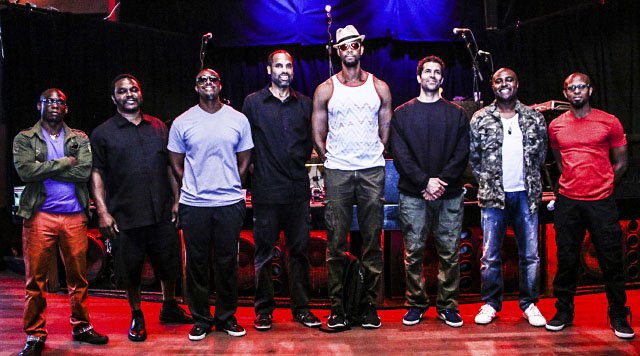Summer School
Over the past few years, I have learned that my summer schedule is a bit more flexible than the rest of the “school year” – making it a great time to spend more time music-making.
And, not just performing, but practicing and studying.
In the last few weeks, I have gone down the Internet rabbit hole looking for vocal exercises and techniques to improve my students’ and my own singing, I have added (even more!) jazz tunes to my repertoire (including work on some of my own compositions) and I did a deep dive into my scat singing methods and practice (all in good time for last month’s SCAT OFF during the Twin Cities annual jazz festival).
Over the 4th, I traveled to Wisconsin to see my brother play a reunion show with musicians he’s known for over 20 years. In the 90s, Black Poet’s Society recorded some songs and became the go-to local act to open for national rappers who came through Madison. Watching my brother play with them reaffirmed that music is all about relationships. It was significant to see the relationships between them and to watch eight black men create in a space together and speak to the experience of being black men in the U.S. right now.

Black Poet’s Society. Photo by Hedi LaMarr.
I also got to spend a bit of time with my mentor and friend Rhiannon, who happened to be in Middleton for the 41st annual National Women’s Music Festival. Since Rhiannon now lives in Hawaii (when she’s not globetrotting to perform and teach), it’s been a number of years since we’ve been in a room together.
I sat in on one of her workshops and it was like a breath of fresh air and your favorite slippers all rolled together. The session was short and the participants had a range of experience singing (from none to other professionals like me), but the ground we covered was vast.
Listening to Rhiannon talk about the why of vocal improvisation was inspiring and rejuvenating. She talked about singing for the planet and for the many kinds of pain it seems that the world is in. At one point in speaking about improvising with the voice, she said, “This way of singing is really about self love.”
I agree. To improvise requires that you fundamentally believe and trust that what you have to sing has value and is worth sharing. Learning to sing is about more than breath support or vowel production or any of the things that go in to good technique.
It is about finding your voice and giving and expressing from that place within you that sings.

